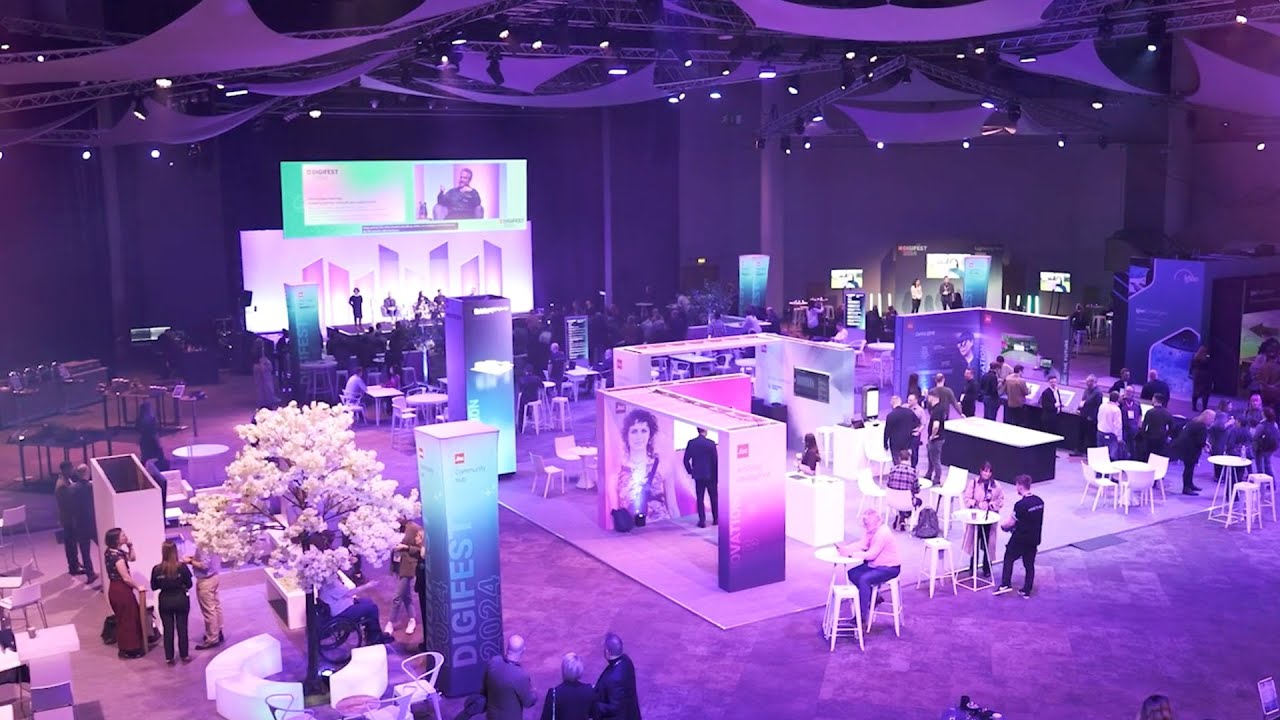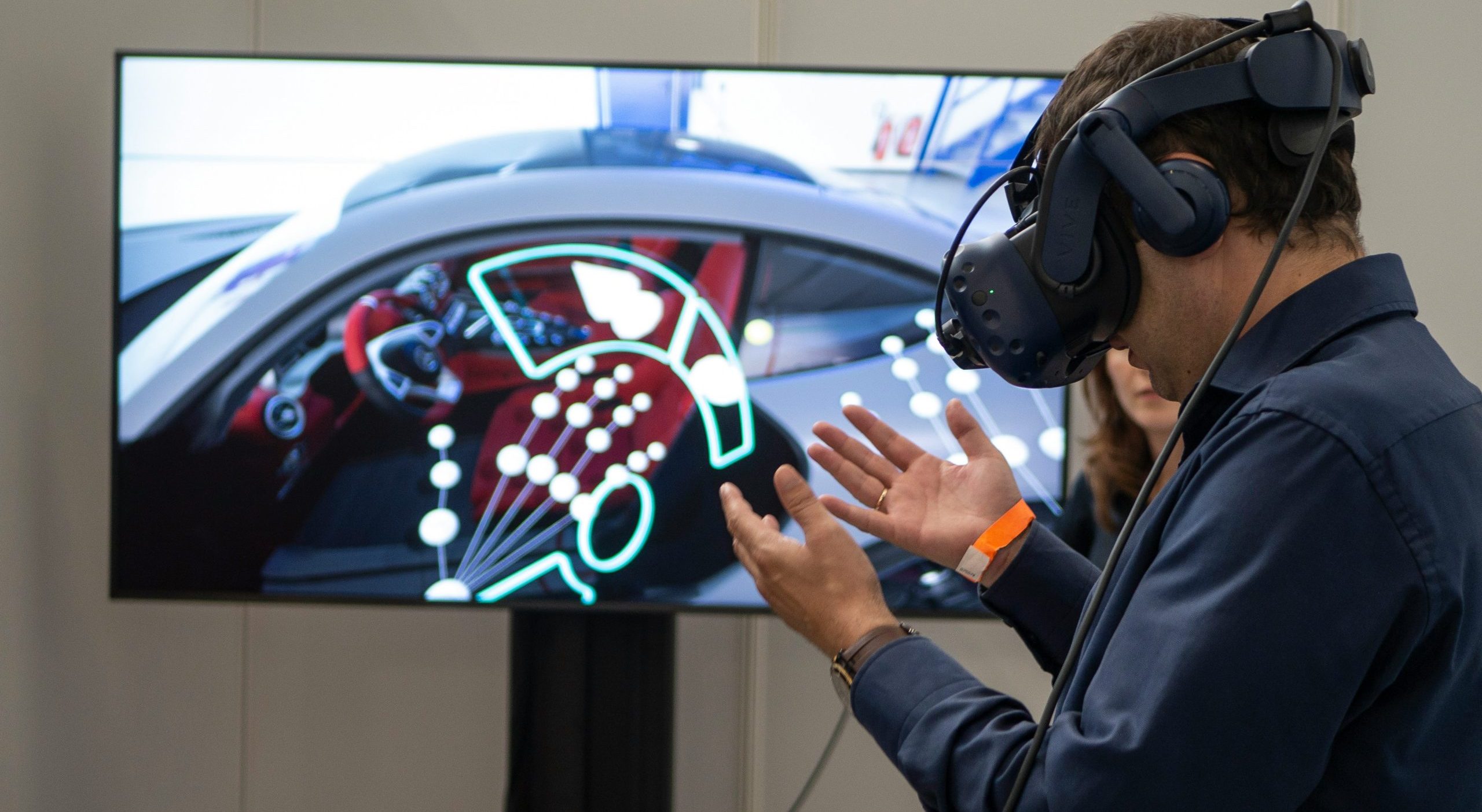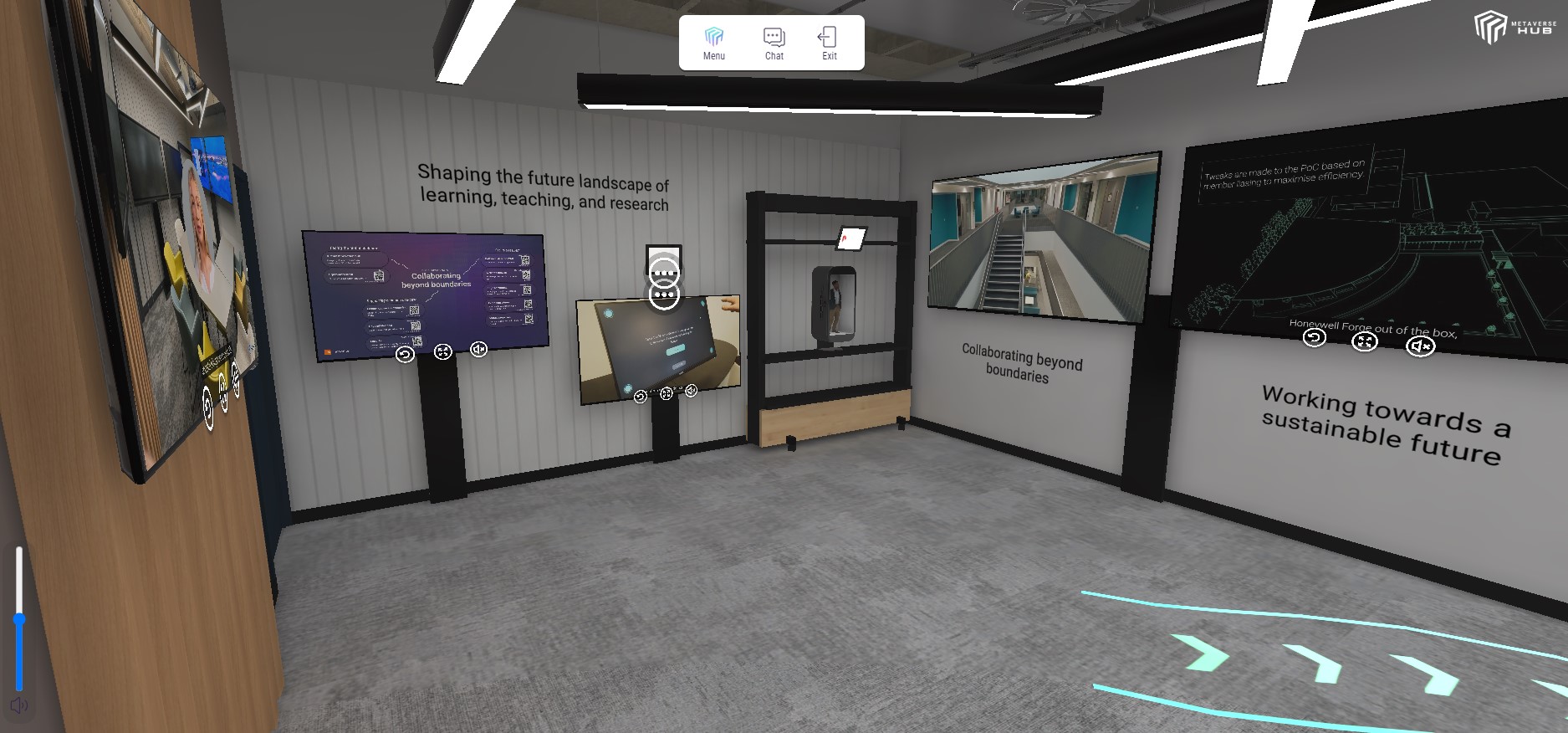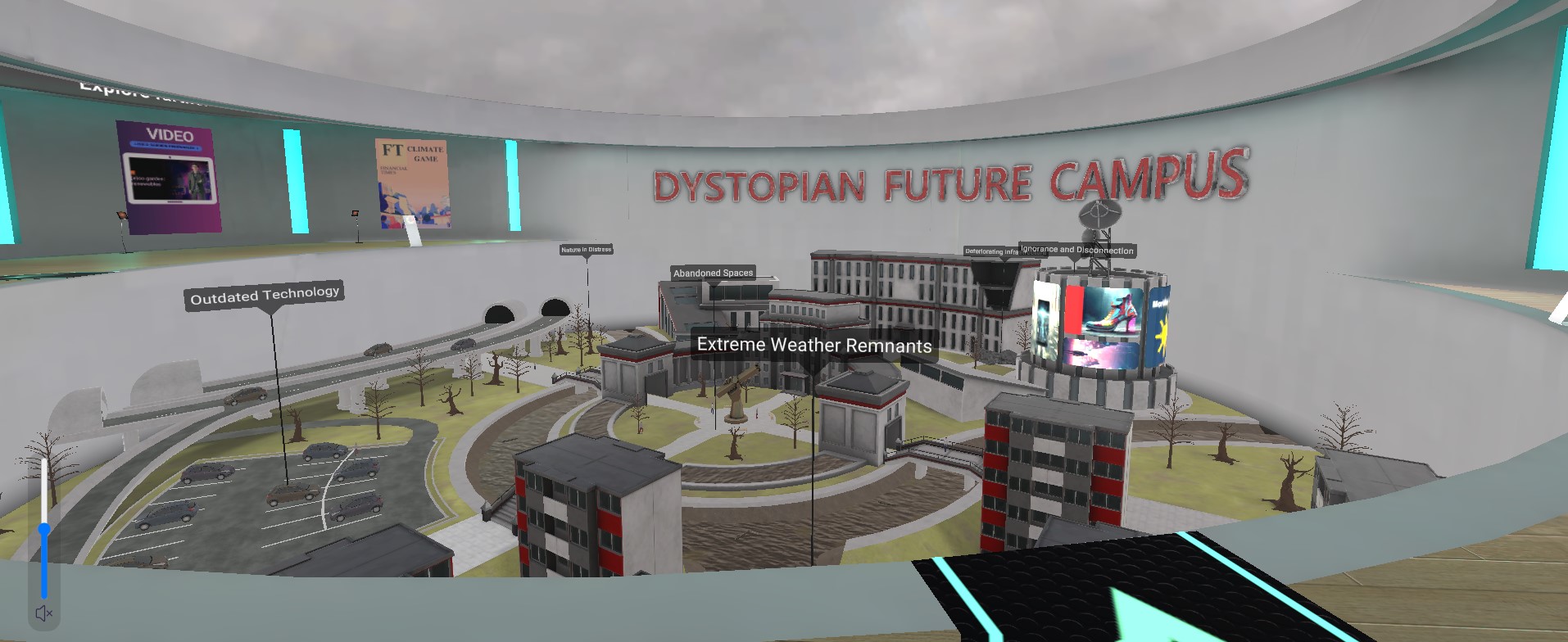Welcome to the second blog on the Virtual Innovation Hub. If you missed the first, feel free to catch up before reading on.
Our interest in creating a 3D digital world grew out of research on the metaverse that the team completed in 2022. The conclusion was that the Metaverse as popularly advanced in technology (and media) circles was a long way off. However, we also noted that educators were experimenting with the concept. Spurred on by the Covid pandemic, institutions were exploring how to create quality virtual experiences for students and staff alike. Although the paradigm shift has yet to emerge, there were enough pockets of innovation around the world to pique our interest.
Aside from the horizon scanning, there were some more pressing questions that we, the innovation team, needed to answer.
How do we better promote our work?
In 2022, we were still living in a Covid world. The pandemic was still a public health emergency of international concern and although the world was returning to in-person events, we’d adjusted to working and socialising virtually.
It was at this time that as a team, we started to promote our ideas, prototypes and proofs-of-concept more at Jisc events, where customers could see, feel and hear about our innovation projects. Equally importantly, the Jisc innovation lab opened in the Bristol office. This was a static room full of the same projects and prototypes we had been showcasing on the road. This was the highest profile our work had achieved.
But what of the virtual audience? By now, all Jisc events had a virtual component, which garnered as many if not more attendees than in-person. How could we could reach these participants, and give them as hands-on an experience as digital would allow?

(Digifest 24 photo)
How do we better communicate the ideas of the innovation team with customers – particularly our thought leadership?
Looking to the future is a core things we do in the Innovation team. Be it evaluating current trends and where they might take us, or combing through evidence to find weak signals of change, we’re interested in exploring the challenges and opportunities of technology in education.
Usually, we would use blogs to share our findings and insights. These are very useful tools for disseminating findings but aren’t always able to tell the whole story. Sometimes, the narrative is bigger than a single piece of work, and it’s not always easy to get people engaged.
How do we inspire others to explore the possibilities of this technology?
As alluded to earlier, our research into the metaverse in 2022 showed that it was entering what the hype cycle terminology calls the trough of disillusionment. There were four clear factors involved in this slide from favour.
Firstly, the concept of the metaverse was overhyped and underdelivered. Big tech companies promised a lot but produced very few tangibles. Let’s not forget that Meta invested over £30 billion in this technology with very little of it to show in the public domain.
Secondly: part from unmet expectations, the metaverse (as supposed) involved a complex layering of visuals, gamification, and boundaryless ownership, supported by blockchain and cryptocurrencies. It’s safe to say that the bubble on artefacts like NFTs has fully burst.
Thirdly: since 2022 there has been a general roll back from XR activities by the big corporations.
Last but absolutely not least, the hedge fund dollars that were backing metaverse research have flowed away into generative AI. This technology is now the dominant discourse of tech in the media and public imagination. Moreover, the tech is out there in people’s lives (for good or bad) in a way that the metaverse never was. How long this surge lasts remains to be seen, but it’s still in full swing. More importantly for education, it’s where the investment funding is staying.
 (Photo by XR Expo on Unsplash)
(Photo by XR Expo on Unsplash)
But…
None of this is to say that the embryonic forms of the metaverse – digital twins, immersive digital environments (and more) – don’t have a role to play now. What can we do with the current technology and how it can change the world around us? We found strong examples in education, the workplace, entertainment, civil planning, and wellbeing. It was important for us to share these possibilities with colleagues, to see how Jisc could usefully use this technology in a way that would bring value to everyone we work with.
The Virtual Innovation Hub is our attempt to make sense of all of these questions. Here’s our answers.
Promotion
We can bolt the Hub onto any Jisc event with a virtual component. This is important because more and more delegates are coming to Jisc events virtually, and the VIH has been designed with ease of access in mind. We deliberately chose an approach which meant a visitor would need no special equipment and can enter without pre-registration, meaning they can be inside in moments.

Imagination
It gives us a more dynamic way to tell stories about our ideas and more power to narrate the future because we can create things that don’t exist.
The example we used in the VIH was about environmental sustainability. In the U/D campus room, we’ve taken good sustainable practices employed by institutions all over the globe, and synthesise them together to create a fictional campus that represents them all. This way, we create an explorable exemplar of great things happening now, into a blueprint of how education institutions can adapt increasing global temperatures.

Inspiration
We don’t know what great ideas people will have unless we expose them to the possibilities. Part of the trajectory for us is to offer our colleagues a place to be inspired by the possibilities of what digital 3D world building technology can do for them.

There’s a famous cinema story that Ridley Scott wasn’t interested in making the film Gladiator (2000), until studio executives showed him “Pollice verso” by Jean-Léon Gérôme. Historical accuracy aside, the painting was Scott’s way into the Roman empire “in all its glory and wickedness”.
The rationale for us was similar: create something that would inspire others to go further.
